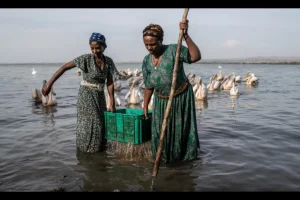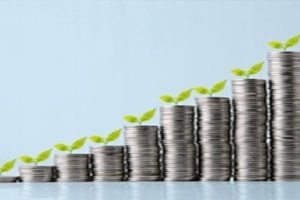
BY MENGISTEAB TESHOME
It is clearly known by many that Greenhouse gases are gases that trap heat in the atmosphere. Hence, it is named as ‘greenhouse’. The main greenhouse gases are carbon dioxide, methane, nitrous oxide, and the fluorinated gases that are still commonly used in refrigerators and air conditioners. When greenhouse gases are released into the atmosphere, they trap heat which changes the climate in multiple ways.
Though many greenhouse gases are naturally occurring, it is the increased emissions from human activities that are causing global warming. The main emissions come from the burning of fossil fuels, such as coal, oil and gas, for the energy that great amount of people rely on to heat (and cool) in their homes, power their cars and buses, cook their food and make many of the products they take for granted.
As the saying goes, “what does not get measured does not get managed”, it is vital that countries understand where their emissions are coming from so they can reduce them. Under the Paris Agreement, countries collectively agreed to reduce their emissions, and each country submitted a Nationally Determined Contribution (NDC). NDCs are essentially national climate action plans that include different types of targets for reducing greenhouse gas emissions. Some plans define how to reach specific targets by 2030; while others indicate a date their emissions will peak but don’t include specific emissions reduction targets.
In order to reduce greenhouse gas (GHG) emissions from land use across an entire jurisdiction while simultaneously creating livelihood opportunities, the Initiative for Sustainable Forest Landscapes (ISFL) will create partnerships with other public sector initiatives and private sector actors. Public-private partnerships (PPPs) are essential to mobilize capital and align objectives in order to create sustainable and scalable models for long-term improved land use.
Private actors – from subsistence farmers to global multi-national firms – have significant influence on the way land is used. The ISFL intends to engage these actors through its programs and, more broadly, work alongside global forums of companies that have pledged to reduce their impact on tropical forests to help identify pathways to enact these commitments. The ISFL will explore opportunities to engage the private sector in the agriculture, energy, and finance sectors, amongst others, where that sector has a significant impact on landscapes within a jurisdiction.
Engagements with the private sector can take several forms, from collaborating on sustainability approaches, to blending finance in-country, to convening stakeholders to work toward complementary goals. Through these partnerships, the ISFL can impact the private sector’s contribution to sustainable land use and increased productivity, ultimately reducing GHG emissions and generating livelihood opportunities.
The public sector has an essential role to play in shaping private sector behavior through appropriate policy setting, regulation and promoting sustainability in a variety of sectors. By addressing these issues, countries can ultimately reduce risk and drive private sector investments in a green economy that benefits people and the environment. The public sector has an essential role to play in shaping private sector behavior through appropriate policy setting, regulation and promoting sustainability in a variety of sectors. By addressing these issues, countries can ultimately reduce risk and drive private sector investments in a green economy that benefits people and the environment.
By taking on the immense challenges of convening public and private actors and creating an enabling environment for sustainable development, countries can expect to generate results – including a reduction in GHG emissions. To incentivize countries to do so, the ISFL will also provide significant results-based climate finance over a 10-15 year period by purchasing verified emission reductions.
The ultimate goal of the results-based finance is intended to create a positive feedback loop for successful interventions for sustainable land use in each program country. If effective, each jurisdiction can continue to generate results, sell verified emission reductions, and reinvest in successful interventions. Eventually, this model for sustainable development could be scaled up beyond each jurisdiction. In Ethiopia the Emission Reduction Purchase Framework Agreement (ERPA) has been signed between the Government of Ethiopia and the World Bank acting as a trustee of the Bio-carbon Fund Initiative for Sustainable Forest Landscapes.
The ERPA Framework Agreement could grant up to 40 million USD for results-based payment, which will be disbursed in two phases, as a result of reduced emissions through forest preservation and other environment-friendly land uses, including livestock management. In addition, specific ERPA agreement amounting 15 million USD for the first phase of the program has been signed. In this program the communities will be rewarded for efforts to reduce carbon emissions by preventing deforestation and land and forest degradation, from January 2022 to December 2024, while the ERPA framework Agreement runs up to 2029. Out of 40 million USD 80 percent directly goes to the participating communities.
The ERPA is a continuation of the Oromia Forested Landscape Project supported by the World Bank with 18 million USD financing which starts implementation on April 2017 with the aims of reducing net GHG emissions and promoting sustainable land use practices to minimize deforestation and GHG emissions, including from the livestock sector, throughout the Oromia regional state, according to the Ministry of Finance.
Ahmed Shide, Minister of Finance of Ethiopia and Ousmane Dione, country director for Ethiopia, Eritrea, Sudan and South Sudan signed the framework agreement on behalf of the Ethiopian Government and the World Bank respectively. These changes will affect everything from surface air and ocean temperatures to precipitation and sea acidification. A warmer climate brings a host of risks from increased drought and wildfires to rising sea levels and heat-related illnesses and deaths. If warming increases by 2°C to 3°C by the end of the century, it is likely that there will be irreversible changes to the climate systems.
The ISFL is a multilateral facility that promotes and rewards reduced greenhouse gas emissions and increased sequestration through better land management, including REDD+ (Reduced Emissions from Deforestation and forest Degradation), climate smart agriculture, and smarter land use planning and policies. The ISFL will pilot programs and interventions at a jurisdictional scale in order to test approaches and share lessons learned broadly. The Bio Carbon Fund Initiative for Sustainable Forest Landscapes was established in 2013. The Initiative is supported by Germany, the Kingdom of Norway, Switzerland, the United Kingdom (Department for Business, Energy and Industrial Strategy and Department for Environment, Food and Rural Affairs), and the United States. It has USD 355 million in fund capital and supports programs in Colombia, Ethiopia, Indonesia, Mexico, and Zambia.
According to center for climate change and energy solution, Carbon dioxide emissions, primarily from the combustion of fossil fuels, have risen dramatically since the start of the industrial revolution. Most of the world’s greenhouse gas emissions come from a relatively small number of countries. China, the United States, and the nations that make up the European Union are the three largest emitters on an absolute basis. Per capita greenhouse gas emissions are highest in the United States and Russia.
THE ETHIOPIAN HERALD THURSDAY 9 MARCH 2023




